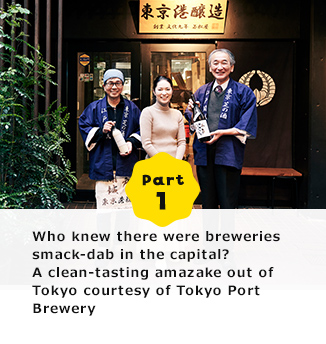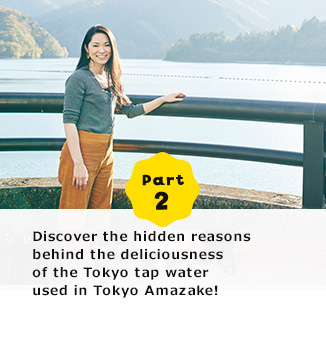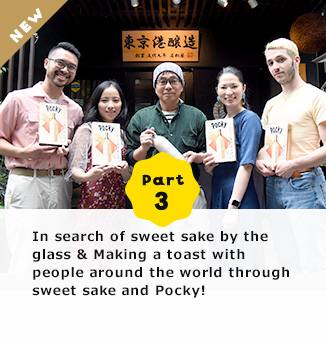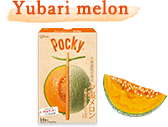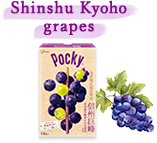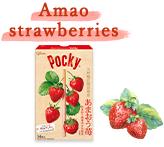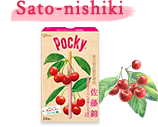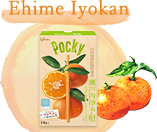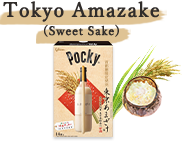The excellence of Tokyo tap water has even been recognized
by sake breweries.
A visit to the Tokyo 150 Years Festival
and the Tokyo Waterworks Scenic Sites
Incredibly, the amazake and sake produced by the Tokyo Port Brewery uses Tokyo tap water as feed water.
According to Chief Brewer Yoshitane Terasawa, Tokyo tap water is medium soft, which makes it perfect for sake brewing.
The brewery's ability to offer sake made from rice and koji sourced locally from Tokyo
at reasonable price points may be thanks to the low cost of tap water.
For this article, we interviewed staff at the Tokyo Bureau of Waterworks to learn why Tokyo tap water is so delicious!
This year marks 150 years since the city changed its name from Edo to Tokyo.
We asked the staff at the Bureau of Waterworks about the history of Tokyo Water
Old meets new.
Looking back on 150 years of Tokyo history
2018 marks exactly 150 years since the city of Edo was renamed Tokyo, leading to the establishment of Tokyo Prefecture. The Tokyo 150 Years Festival was held to commemorate this milestone. We looked back on the history of Tokyo, including the Meiji, Taisho, Showa, and Heisei Eras, from the perspective of various Tokyo Metropolitan Government Office bureaus and municipalities.
My first stop was the Bureau of Waterworks booth. I was greeted by the staff of the Bureau of Waterworks and their mascot, Suitekikun (Water Drop Boy).
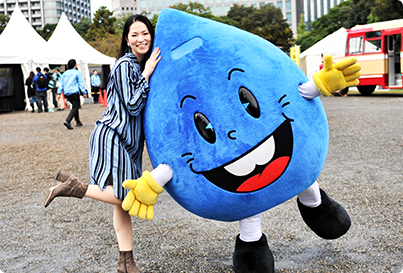
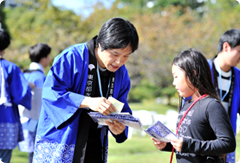
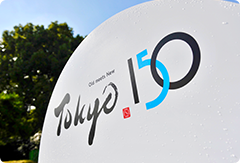
Redesigning Tokyo Water
based on a design inspired by Edo kiriko cut glass
The Tokyo Metropolitan Bureau of Waterworks has redesigned Tokyo Water to help it become more widely known. Based on the three concepts of Tokyo-ness, safety and taste, and local production for local consumption, this design was chosen by city residents. If you look closely at the pattern inspired by Edo kiriko, a traditional Tokyo craft, you can see the character for water hidden in the design.
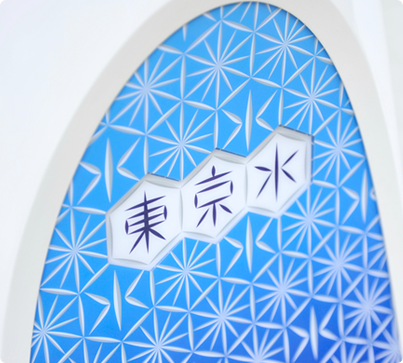
Why Tokyo tap water became so delicious
"Have you heard of advanced water purification treatment?" Mr. Yoshinobu Nakasuji, who works in the Service Promotion Department of the Bureau of Waterworks, helped me understand why Tokyo tap water is so delicious. In the past, tap water didn't have the reputation for good taste that it has now. The reason for this was the presence of trace odors and organic matter, which could not be removed using conventional water treatment methods. The current advanced water purification process uses the conventional treatment method with the addition of two new treatments: ozone treatment and biological activated carbon.
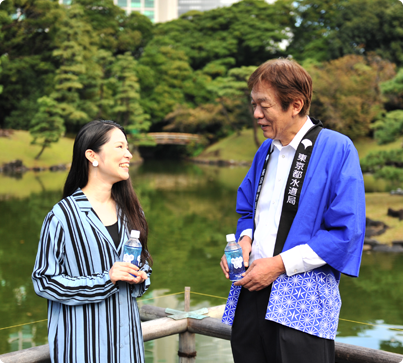
The Tokyo-wide adoption of advanced water purification took 25 years
The new method uses ozone to decompose organic matter into fragments that can then be absorbed by the activated carbon, resulting in a drinking water supply with improved safety and better taste. The installation of advanced water purification facilities began in 1989, and after 25 years of work, advanced water purification was finally in operation across the entire Tone River system (within Tokyo) in 2014! Being able to drink straight out of the faucet is a world-class accomplishment. Now you know why Tokyo tap water became so delicious.
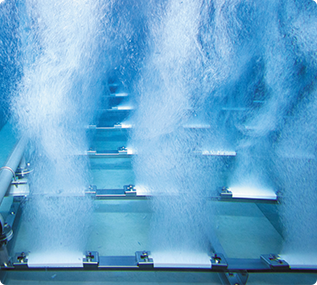

Provided by䰗啜he Tokyo Metropolitan Bureau
of Waterworks
Tap water vs. mineral water: which one tastes better?
After hearing from Mr. Nakasuji, I tried some Tokyo Water!
I took many sips to sample the taste of the water, but I could not tell the difference between Tokyo Water and the mineral water that I normally drink. There was not even a trace of the "tap water taste."
In fact, in a taste comparison study conducted by the Bureau of Waterworks, when participants drank tap water and mineral water without being told which was which, nearly half of the respondents said the tap water tasted better.


Who knew that Tokyo is home to one of Japan's largest water supply reservoirs!
Next, I visited the Ogouti Dam in Okutama. Located around a 2 hour-drive from the city center, the Ogouti Dam is surrounded by the vast natural landscape of Okutama Lake. This area, which was selected by the Tokyo Metropolitan Bureau of Waterworks as a Tokyo Waterworks Scenic Site, is a carefully managed water supply facility that is among the best in the world.
Okutama Lake is
the reason for
the city's stable
water supply
The Ogouti Dam, which is one of the largest water supply dams in Japan, can store up to 40 days worth of water for the city of Tokyo. The dam's shape allows it to provide this stable water supply. Ogouchi Dam is a concrete gravity dam, built to use the weight of its own concrete to resist water pressure. Now more than 60 years old, it is still certified as safe to withstand even the strongest potential earthquake. I feel like I could be swallowed up by the massiveness of the dam...!
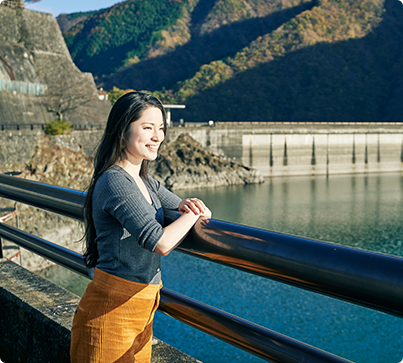
Rabbits, bears,
and serows.
Discover a healthy
forest ecosystem
With cherry blossoms in the spring and fall leaves in autumn, Ogouti Dam also offers a place to enjoy beautiful scenery in every season. During my visit, I saw numerous people taking pictures of the magnificent scenery. This area, which is also a water source and a water conservation forest, is home to a healthy and well-protected ecosystem that is inhabited by Japanese serows, wild rabbits, and black bears, among other animals.
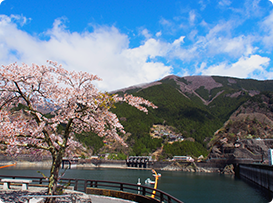
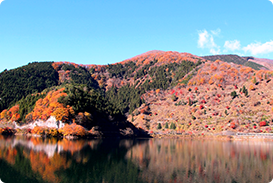
Provided by䰗啜he Tokyo Metropolitan Bureau
of Waterworks Ogouti Reservoir
Management Office
Where does the lake water come from?
Next, to a facility where you can enjoy learning about the structure of the dam
After walking on the dam and enjoying the comfortable breeze, I visited the nearby Okutama Water and Green Friendship Hall. Here, both children and adults can learn about the natural environment around Okutama and the structure of the dam.
Also, you can see real-time data on the Ogouti Dam. During my visit, the Ogouti Dam was at 84% of its storage capacity, with a water storage volume of 156.25 million m3 and a discharge rate of 4 m3 per second. The scale of these numbers is so vast that it's hard to comprehend (LOL).
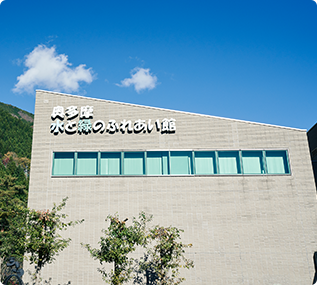

Savor memories of the Ogouti Dam
with a curry that is only available to 20 customers a day
The restaurant's most popular item is the Ogouti Dam Curry. The dish reproduces the landscape of the dam quite closely, with an observation tower made of hash browns, a maintenance ship made of eggs, and a broccoli-based coniferous forest. To eat it, you have to destroy the dam (LOL), which made me feel a little guilty, but it was delicious nonetheless.
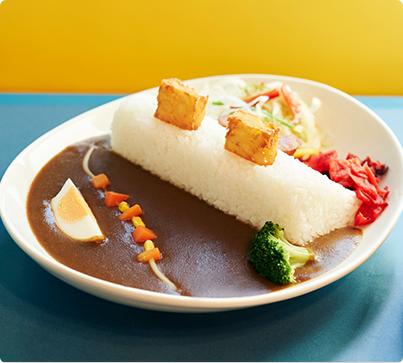
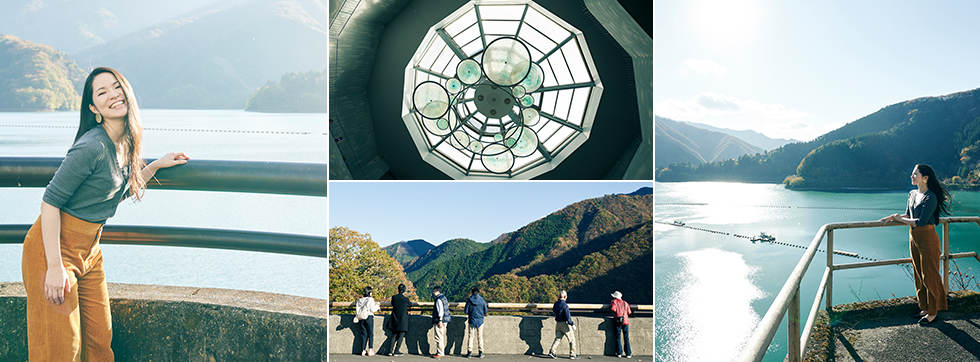

The leaves were just starting to turn, and I was told that the colors would differ depending on the year's typhoons and the temperature of the morning low. I am sure it is also beautiful during cherry blossom season or when the lake is surrounded by spring foliage. I hope I can visit again!


I was able to feel a sense of closeness with the water that comes out of a faucet.
窶廬 grew up in the lush nature of deep in the mountains, so the fresh air of Okutama reminded me of my hometown.
Tap water is a part of our lives that is taken for granted. Once I found out where it comes from and who is involved in making it available,
I grew more attached to Tokyo tap water."










